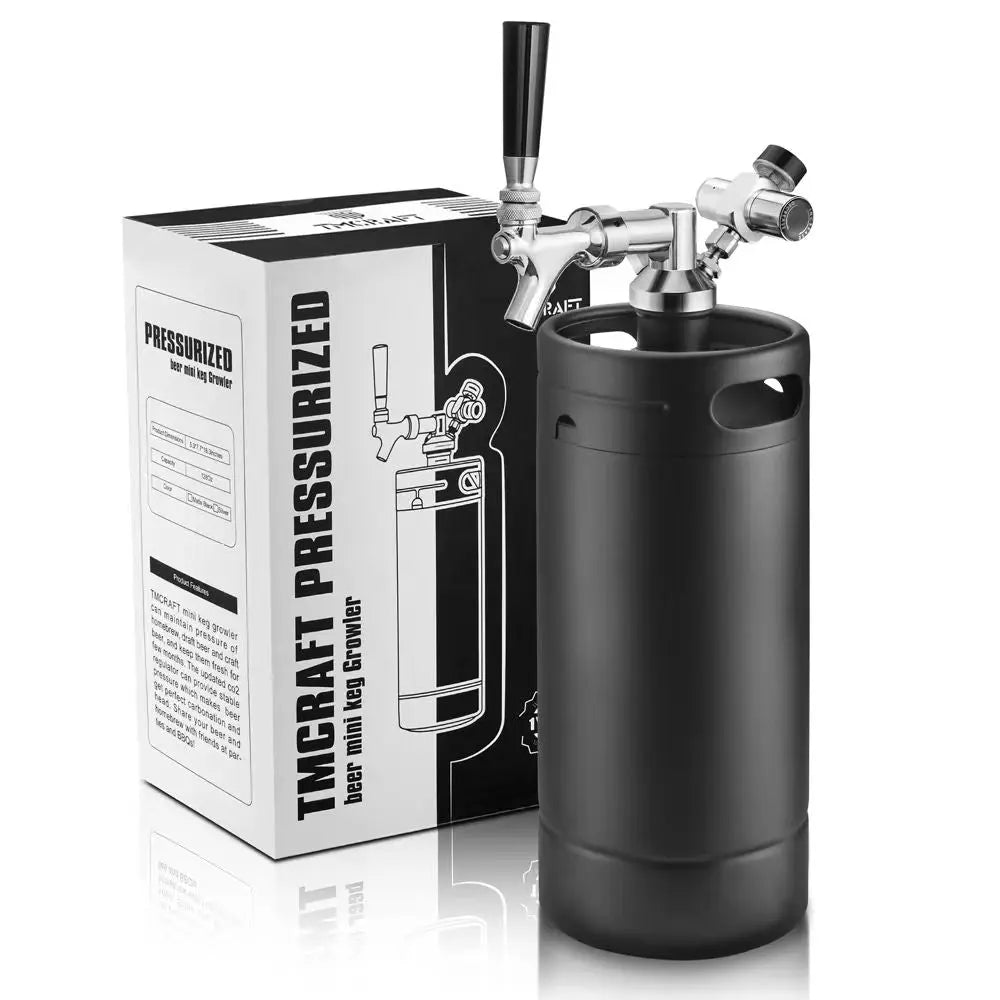
Next-Level Kegging: Advanced Tips for Ball Lock Systems & Pro Pours
Focus Keywords: Ball Lock Keg, Homebrewing Equipment, CO₂ System, Kegging Tips, TMCRAFT Ball Lock Kegs
Elevating Your Homebrew Game with Ball Lock Kegs
Once you’ve mastered the basics of homebrewing, the next challenge is getting your beer from fermenter to glass with professional-level quality. That’s where the Ball Lock Keg system comes in.
Known for its reliability, easy maintenance, and precise carbonation control, a Ball Lock Keg can turn your setup from simple to exceptional. Whether you’re brewing for friends or fine-tuning your latest recipe, understanding how to optimize your CO₂ system and pour technique can make all the difference.
TMCRAFT Ball Lock Kegs are built with high-grade stainless steel and precision-engineered fittings to help you achieve that brewery-fresh taste—batch after batch.
1. Fine-Tune Your CO₂ System for Perfect Carbonation
Every beer style has its sweet spot for carbonation. Too much CO₂ can lead to foamy pours and bitey flavor; too little leaves your beer flat.
Here’s how to find balance:
- Lager & Pilsner: 2.4–2.6 volumes of CO₂
- Pale Ales & IPAs: 2.2–2.4 volumes
- Stouts & Porters: 1.8–2.0 volumes
To dial it in, chill your kegged beer first—cold beer absorbs CO₂ more effectively. Then, set your CO₂ regulator to the target PSI (typically 10–12 PSI for most beers) and let it carbonate for 2–3 days. TMCRAFT regulators are compatible with all standard ball lock connectors, ensuring accurate control over carbonation levels.
2. Master the Art of Pressure Balancing for Pro-Level Pours
If you’ve ever poured a glass of foam or a flat pint, your pressure balance might be off. The trick lies in balancing the CO₂ pressure with your beer line length and temperature:
- Longer lines reduce foam but slow the pour.
- Higher CO₂ pressure maintains carbonation but can over-foam warm beer.
Pro tip: For most setups, 5–8 feet of beer line at 10–12 PSI offers the best results. Always pour with a clean glass and at an angle to preserve carbonation and head retention.
3. Keep Your Kegging System Spotless
Advanced brewers know—cleanliness is the key to consistency. Regular maintenance prevents off-flavors, leaks, and contamination.
Your routine should include:
- Rinsing after every keg emptying with warm water.
- Deep cleaning weekly using a TMCRAFT cleaning keg or sanitizer solution.
- Inspecting O-rings for cracks or wear that can cause slow leaks or pressure loss.
A clean Ball Lock Keg system ensures every pour tastes as fresh as your first.
4. Upgrade Your Setup for Efficiency
Once you’ve nailed the fundamentals, a few small upgrades can take your system to the next level:
- Dual-gauge regulator for monitoring both tank and keg pressure.
- Quick-disconnect fittings for easy transfers between kegs.
- Gas manifolds to serve multiple styles from one CO₂ tank.
TMCRAFT’s stainless-steel fittings and reinforced hoses are designed to enhance flow control and durability—ideal for brewers ready to scale up their draft setup.
5. Troubleshooting for Consistent Performance
Even the best systems need occasional tuning. If you notice inconsistent pours, foam issues, or flavor changes:
- Check your CO₂ regulator for proper pressure.
- Inspect lines for buildup or temperature fluctuation.
- Test seals and disconnects for minor leaks using soapy water.
Keeping your Ball Lock Keg system well-balanced and maintained ensures every pint you pour tastes as intended.
Final Thoughts: Brew Like a Pro, Pour Like One Too
Homebrewing is as much about craft as it is about precision—and mastering your Ball Lock Keg system bridges the gap between home and professional setups. With the right pressure control, maintenance habits, and equipment upgrades, you’ll enjoy consistent, brewery-quality pours from every batch.
For brewers who take their craft seriously, TMCRAFT Ball Lock Kegs deliver the performance, reliability, and control needed to elevate every pour.

